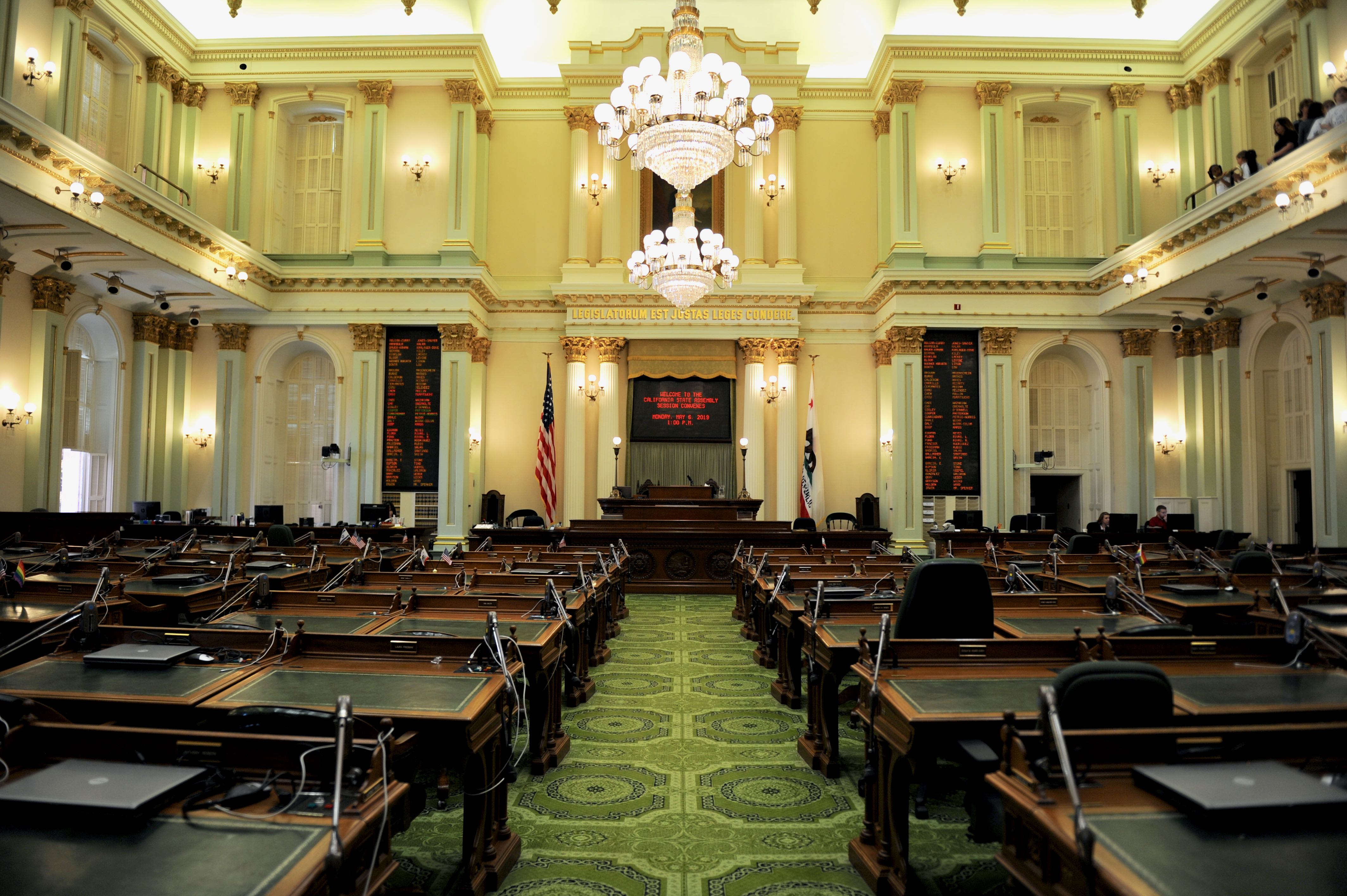
California State Capitol (Photo: Kevin Sanders for California Globe)
Is This the End of the World for California’s Budget?
Tax increases might be whipping a dead horse
By Michael Genest, May 8, 2020 8:05 am
California Governor Gavin Newsom just announced a $54 billion budget gap. That’s a two-year number comparable to the $60 billion gap that Gov. Arnold Schwarzenegger “solved” in 2009-2010. It represents about 26 percent of the total revenue projected for 2020-2021 in the budget released in January.
Gov. Schwarzenegger’s “gap” was just under 60 percent in comparable terms. Gov. Pete Wilson found a 34-percent shortfall when he took office. So, we’ve been here before, and seen much worse.
That is not to say it’s going to be easy and it certainly will not be painless. But, the pain will be much less than it could have been, thanks to former Governor Brown. Not only did he hold spending growth down to a dull roar, but he paid off all the accumulated budgetary debt from the Davis and Schwarzenegger years. More importantly, Brown built up a reserve that, if spent all at once this year, would cut Gov. Newsom’s problem from 26 percent down to 17 percent.
So, what are the options for Gov. Newsom for “solving” a 26 percent, or 17 percent deficit? Of course, as a Democrat with a Democrat super majority, he’ll look to tax increases. But under these circumstances, that might be whipping a dead horse. Plus, it’s hard to imagine that even this bunch could find even more taxes to raise.
Then, don’t forget about Proposition 98. Depending how the formulas work, it could allow a substantial cut to K-14. Of course, that would be a stop-gap because Prop. 98 would make the state pay it all back some day in the future.
On the other hand, teachers, unlike hair stylists and wait staff, did not take any pay cut, even though they too sheltered at home this spring. Of course, that will be a hard sell.
I hate to say it, but that leaves two classic “budget solutions:” federal bailouts and gimmicks. I think that some limited additional federal funds probably will be forthcoming, but no one should expect that will solve the problem.
Gimmicks on the other hand are a bi-partisan favorite. The thing about gimmicks is that it will be hard for most Californians to see them or to care about them. The other thing about gimmicks is that they set the state up for lingering problems for years to come.
If legislators and governors cared about budgetary sustainability, they would eschew such easy answers. So, keep your eyes open; gimmicks it will be.
In the long run, of course, the solution to this problem can be augured by examining the entrails of the thing that made it – the shutting of businesses, and the crippling of the economy. It really can not be solved until the economy is back open and running. I see signs that Gov. Newsom gets that, although his recent decision to pile yet another burden onto businesses with his order allowing employees who contracted coronavirus to make workers’ compensation claims makes me wonder.
- Is This the End of the World for California’s Budget? - May 8, 2020








I was surprised to learn that Marin County HHS is now enforcing “lockdown” and business closure requirements that are more strict than Governor Newsom’s. The Governor is stipulating that some businesses may open Friday including retailers that can offer curbside sales. Even that business-killer is too loose for Marin HHS?
Speculation is rife that the Governor blinked at strict lockdowns because of protests and county mutinies. My analysis is that he got the shivers when he realized the magnitude of budget deficits he is generating. Tens of billions, for starters. And I think he is assuming that the economy can just “reopen” upon command. That assumption is probably false.
The economic destruction snowball is just starting to build. It won’t slow down just because a few restrictions are eased. For instance, few restaurants can survive with 25% or even 50% capacity restrictions. Ditto retailers. And let’s mention landlords, many of whom are your kindly neighbors who are providing an honest service — much like hoteliers, who *are* required to be paid(!) — but Marin County has eliminated the requirement that renters actually pay rent; evictions will not be processed until 3 months after the Governor declares the end of the emergency, which might be two or more years away! All of these things, and more, cause chain reactions through the economy due to the interconnectedness of all things. And it’s no use to say to the landlords, “Oh, just refinance!”, because banks have closed off equity lending — and restricted new consumer credit in general. Any business requiring consumer credit, like auto sales, is looking into the abyss! And the list goes on and grows every day, and it will surely continue to grow due to a chain reaction of bankruptcies and force-majeure contract breaches.
I am also surprised by Marin County and Novato City elected leaders failing to fight for businesses in Marin. They seem to have just abdicated all responsibility to Matt Willis of Marin HHS, who is, inexplicably, in charge of Marin’s economy! That won’t end well.
So! Now that many thousands in Marin have been nonchalantly declared “non-essential” by Marin HHS, and their futures thrown into the bureaucratic wood-chipper, what should be done to balance government budgets? Here is my modest proposal.
By definition, government services that have failed to provide services to the public during the lockdown are “non-essential”. Apparently we can get along just fine without them. An example: libraries and paper books. Everything is now electronic so we only really need a few programmers and administrators in Sacramento for the entire state library system. Everyone else can be given the opportunity to apply for other jobs in “public service”, and the assets auctioned off. That will save a ton of money. It’s easy to declare people “non-essential”! We’ve already seen how easy it was to do that to private enterprises — who happen to pay the taxes that fund the lavish pay and benefit packages enjoyed by public employees. So, now, let’s take that next step. Eliminating all — by-definition — “non-essential” public services and zeroing them out in the budgets will help preserve essential workers like police and fire fighters.
The crisis isn’t ending now that lockdowns are beginning to be eased. We have simply reached the end of the beginning — or, in baseball terminology, the 2nd inning. Where we’re at now is a ruined economy overseen politicians who are proving very adept at destroying jobs and businesses while handing off responsibility for the disastrous outcome.
Excellent comment. My analogy is any government is like a giant black hole in space that will suck in planets, asteroids, and even whole stars as it grows exponentially large. The only way to stop the growth of a black hole is to avoid coming to close to the event horizon and getting pulled in. The only way to stop the growth of government is to stop feeding it through its taxation power and other confiscations. Once everything has been taxed and/or confiscated from the producers, only then will it stop growing.
Looks like Unicorning will be low priority……nothing wrong with Cherrios for lunch too….
Forgive my ignorance. What is a tax gimmick?
Not a tax gimmick, a budget gimmick. Some examples: moving a check write into the next fiscal year, booking revenues from a proposal that probably won’t happen, borrowing from special funds, etc. the list is longer than my imagination or memory can handle and creative minds always find new ways to fake it.
No hiring of forecasted new cronies for committees and boards, a particular budget crunching favorite….these pikers make upwards of 150k for quarterly meetings in Yosemite discussing preserving bird habitat, Peruvian Diversity Study curriculum changes at inner city community colleges,,,,etc, et al.
Budget gimmick. Lots of kinds, more than my memory or imagination can list. A few examples: moving a check write into the next fiscal year, changing accounting basis for certain large programs and tax sources, counting on revenues from a sale of property that is not likely to actually happen, borrowing from special funds, etc. The definition is any move you can get away with that helps balance spending and revenues in your budget projection, but which either will never occur, or only “kick the can down the road”. We got a million of ’em.